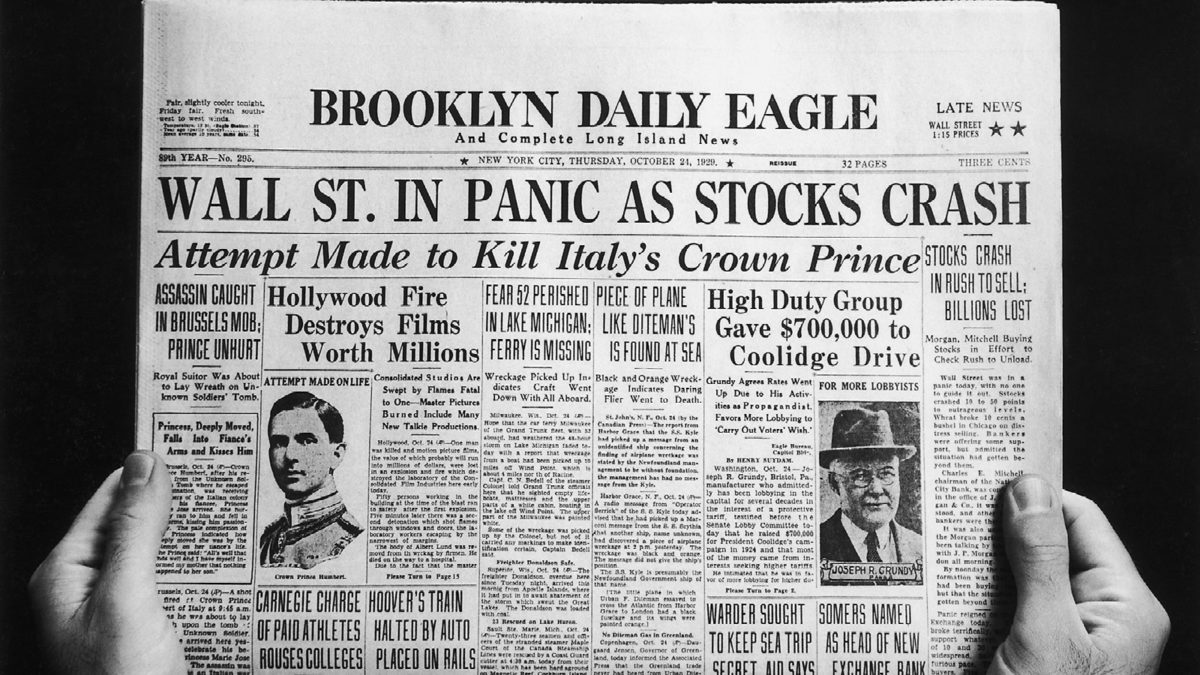Markets still partying like it’s 1929
Professional investment managers look at valuations all the time. They all know that the price at which a stock was bought has a big impact on the overall percentage return to the investor over the medium-long term. But for the past eight years in Australia and ten years in the US, the value style has underperformed across the market. While investors may be tempted to say “this time it’s different,” history offers a cautionary tale.
Lance Roberts, chief investment strategist at Real Investment Advice, a big financial advice business based in Houston, Texas, says in a recent client report: “During extended bull markets rationalisation becomes commonplace to justify overpaying for value… While it may be bullish to come up with reasons for overpaying for assets in the short term, outcomes are quite different long-term.”
Roberts is a celebrity adviser, spending a lot of his time with the media and even hosting his own television show. The firm has a producer for the show and internet channels of communication. However, the firm backs up its views with strong analysis, often adopting a contrarian view, in the manner of some very successful investment managers. It makes some big calls.
The ‘this time it’s different’ view was heard a lot during the last tech boom, which ran until 2000 before turning into the “tech wreck” in the second quarter of that calendar year. This tech boom is different in that it mainly involves the tech mega-stocks – Facebook, Amazon, Apple, Google and others – with some recently added spice from biotech hopefuls, due to COVID-19. The last tech boom included some bizarre IPOs of companies with massive cash burns, no earnings and, as it transpired, no prospects. Some investors with that memory in mind, are currently thinking that we may be witnessing the beginnings of a collapse in tech stock valuations, following a 10% drop in the tech-heavy Nasdaq exchange in the past two weeks (to September 11).
“Given that economic leverage (corporate, consumer, financial, and government debt) is at record levels and rising, the ability to create more robust and sustainable economic growth (which would lead to higher rates of inflation) remains little more than a hopeful goal,” Roberts says. “The problem with the idea that valuations have permanently shifted upward is the market anomaly from 1990-2000 skewed valuations above the long-term medians. However, given economic growth remains mired at 2%, or less, over the long term, average valuation ranges will begin to trend lower in the future.
“As real economic growth significantly declined over the past two decades, it triggered a series of adjustments that represent the forces behind the ‘Big Shift’. Most importantly, the downshift in real economic growth disrupted the financial relationship of profits, future growth, and market value. Slower growth drives P/E (price/earnings) ratios downward for similar reasons that it drives earnings per share (EPS) upward.”
Since the global financial crisis lows of 2008, much of the rise in profitability has come from cost-cutting and accounting changes rather than increases in top-line revenue. While tax cuts in the US provided the capital for a surge in buybacks, revenue growth remained muted. Now, the economic ‘shutdown’ has crushed revenue growth entirely.
Since 2009, the operating EPS of corporations has risen by just 158%. However, the increase in earnings did not come from an increase in revenue. During the period, sales (which are boosted by share reductions) grew by a marginal 41%. However, investors have bid-up the US market more than 365% over the past 11 years.
After making an assessment of the US market back to 1871, the advisory firm says that the two bull runs which lasted about 20 years started off with an average P/E ratio in the single digits and ended up with average valuations of about 22 times-25 times earnings before collapsing. They were 1980-2000 and 1949-1966. The current average P/E ratio for the S&P 500 is 30 times earnings.
Roberts believes that the current cycle, starting in 2009, most closely mimics the lead-up to the Great Crash, which was preceded by a secular bull market from 1919-1929. While valuations started below 5 times earnings in 1919, they eclipsed 30 times earnings ten years later, in 1929. “The mistake investors repeatedly make is dismissing the data in the short term because there is no immediate impact on price returns. Valuations by their very nature are horrible predictors of 12-month returns. Investors should avoid any investment strategy which has such a focus. In the longer term, however, valuations are strong predictors of expected returns,” Roberts says.










